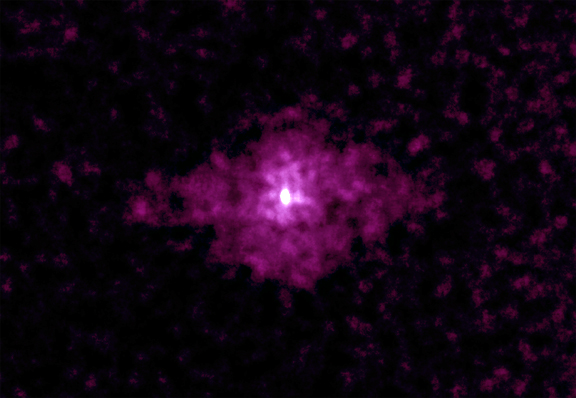3C58: The remnant of a supernova in the constellation Cassiopeia.
Caption: When astronomers used Chandra to observe the remains of a supernova believed to have been observed in 1181 AD, they discovered one of the youngest pulsars known. Embedded in a cloud of high-energy particles, the pulsar is rotating about 15 times a second and is slowing down at the rate of several microseconds per year. A comparison of the rate at which the pulsar is slowing down and its age indicates that the 3C58 pulsar is rotating just about as fast now as when it was formed. This is in contrast to the Crab pulsar, which was formed spinning much more rapidly and has slowed to about half its initial speed.
Scale: Image is 15 arcmin across (left to right).
Chandra X-ray Observatory HRC Image
|


